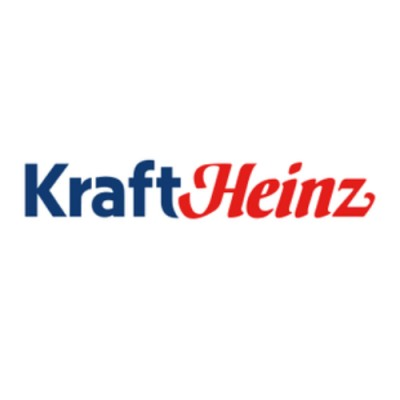Skechers Takes a Bold Step: Going Private in a $9.4 Billion Deal
May 6, 2025, 10:07 am

Location: United States, Illinois, Chicago
Employees: 10001+
Founded date: 2015
In a move that has sent ripples through the footwear industry, Skechers has announced its decision to go private in a monumental $9.4 billion deal with investment firm 3G Capital. This acquisition marks the largest buyout in the history of the sneaker business, a significant shift for a company that has been publicly traded for 26 years. The deal, which is set to close in the third quarter of 2025, will see Skechers' shares bought at $63 each, a 30% premium over the company’s average stock price.
Founded in 1992, Skechers has grown from a niche player focused on men’s street style to a global footwear giant. The company went public in 1999, but recent challenges have prompted a reevaluation of its public status. The backdrop of this acquisition is a volatile economic landscape, characterized by steep tariffs and shifting consumer sentiment. Skechers, like many in the industry, has felt the pressure from a 145% import tariff on goods from China, a situation that has strained profit margins and complicated supply chains.
The decision to go private allows Skechers to navigate these turbulent waters without the constant scrutiny of Wall Street. It’s a strategic retreat, akin to a soldier regrouping before a major offensive. By partnering with 3G Capital, known for its aggressive cost-cutting strategies and restructuring expertise, Skechers aims to bolster its operations and emerge stronger.
Skechers’ leadership will remain intact post-acquisition. Founder and CEO Robert Greenberg, along with his son Michael and COO David Weinberg, will continue to steer the company. This continuity is crucial. It ensures that the brand’s identity and vision remain intact while benefiting from 3G’s financial backing and operational acumen.
The footwear market is fiercely competitive. Skechers ranks as the third-largest footwear company in the U.S., trailing only behind Nike and Deckers. Its recent earnings report highlighted a record-high sales figure of $2.41 billion for the first quarter of 2025, a 7.1% increase year-over-year. This growth reflects strong global demand, with international sales accounting for 65% of its business. However, the company’s stock had seen a decline of nearly 30% earlier this year, prompting concerns about its future.
3G Capital’s acquisition strategy often involves zero-based budgeting, a method that requires executives to justify every expense from scratch each quarter. This approach could lead to significant operational efficiencies at Skechers, potentially paving the way for a future public offering once the company stabilizes.
The acquisition has not only captured the attention of investors but also sparked discussions about the broader implications for the footwear industry. Skechers, along with other major brands like Nike and Adidas, recently urged the U.S. government to exempt footwear from reciprocal tariffs. The high tariffs threaten to inflate prices and reduce inventory, creating a precarious situation for both manufacturers and consumers.
Skechers has built its brand on comfort and affordability, appealing to a diverse customer base. Its shoes, priced between $75 and $150, are marketed globally, with approximately 5,000 retail stores in over 120 countries. Celebrity endorsements have further enhanced its visibility, keeping the brand relevant in a crowded marketplace.
The timing of this acquisition is telling. As consumer spending tightens and economic uncertainties loom, companies are reassessing their strategies. Skechers’ decision to go private can be seen as a proactive measure to insulate itself from market volatility. It’s a strategic retreat, allowing the company to focus on long-term growth without the pressure of quarterly earnings reports.
Analysts have expressed surprise at the deal, noting that Skechers has traditionally been viewed as a family-run business. The Greenberg family’s deep involvement in the company’s operations has been a hallmark of its identity. However, the partnership with 3G Capital suggests a willingness to adapt and evolve in response to changing market dynamics.
In conclusion, Skechers’ decision to go private is a bold move in a rapidly changing landscape. The $9.4 billion deal with 3G Capital not only underscores the challenges facing the footwear industry but also highlights the potential for growth and innovation. As Skechers embarks on this new chapter, it will be interesting to see how the company leverages its resources to navigate the complexities of the market. The future may hold new opportunities, and with the right strategies in place, Skechers could emerge stronger than ever.
Founded in 1992, Skechers has grown from a niche player focused on men’s street style to a global footwear giant. The company went public in 1999, but recent challenges have prompted a reevaluation of its public status. The backdrop of this acquisition is a volatile economic landscape, characterized by steep tariffs and shifting consumer sentiment. Skechers, like many in the industry, has felt the pressure from a 145% import tariff on goods from China, a situation that has strained profit margins and complicated supply chains.
The decision to go private allows Skechers to navigate these turbulent waters without the constant scrutiny of Wall Street. It’s a strategic retreat, akin to a soldier regrouping before a major offensive. By partnering with 3G Capital, known for its aggressive cost-cutting strategies and restructuring expertise, Skechers aims to bolster its operations and emerge stronger.
Skechers’ leadership will remain intact post-acquisition. Founder and CEO Robert Greenberg, along with his son Michael and COO David Weinberg, will continue to steer the company. This continuity is crucial. It ensures that the brand’s identity and vision remain intact while benefiting from 3G’s financial backing and operational acumen.
The footwear market is fiercely competitive. Skechers ranks as the third-largest footwear company in the U.S., trailing only behind Nike and Deckers. Its recent earnings report highlighted a record-high sales figure of $2.41 billion for the first quarter of 2025, a 7.1% increase year-over-year. This growth reflects strong global demand, with international sales accounting for 65% of its business. However, the company’s stock had seen a decline of nearly 30% earlier this year, prompting concerns about its future.
3G Capital’s acquisition strategy often involves zero-based budgeting, a method that requires executives to justify every expense from scratch each quarter. This approach could lead to significant operational efficiencies at Skechers, potentially paving the way for a future public offering once the company stabilizes.
The acquisition has not only captured the attention of investors but also sparked discussions about the broader implications for the footwear industry. Skechers, along with other major brands like Nike and Adidas, recently urged the U.S. government to exempt footwear from reciprocal tariffs. The high tariffs threaten to inflate prices and reduce inventory, creating a precarious situation for both manufacturers and consumers.
Skechers has built its brand on comfort and affordability, appealing to a diverse customer base. Its shoes, priced between $75 and $150, are marketed globally, with approximately 5,000 retail stores in over 120 countries. Celebrity endorsements have further enhanced its visibility, keeping the brand relevant in a crowded marketplace.
The timing of this acquisition is telling. As consumer spending tightens and economic uncertainties loom, companies are reassessing their strategies. Skechers’ decision to go private can be seen as a proactive measure to insulate itself from market volatility. It’s a strategic retreat, allowing the company to focus on long-term growth without the pressure of quarterly earnings reports.
Analysts have expressed surprise at the deal, noting that Skechers has traditionally been viewed as a family-run business. The Greenberg family’s deep involvement in the company’s operations has been a hallmark of its identity. However, the partnership with 3G Capital suggests a willingness to adapt and evolve in response to changing market dynamics.
In conclusion, Skechers’ decision to go private is a bold move in a rapidly changing landscape. The $9.4 billion deal with 3G Capital not only underscores the challenges facing the footwear industry but also highlights the potential for growth and innovation. As Skechers embarks on this new chapter, it will be interesting to see how the company leverages its resources to navigate the complexities of the market. The future may hold new opportunities, and with the right strategies in place, Skechers could emerge stronger than ever.


